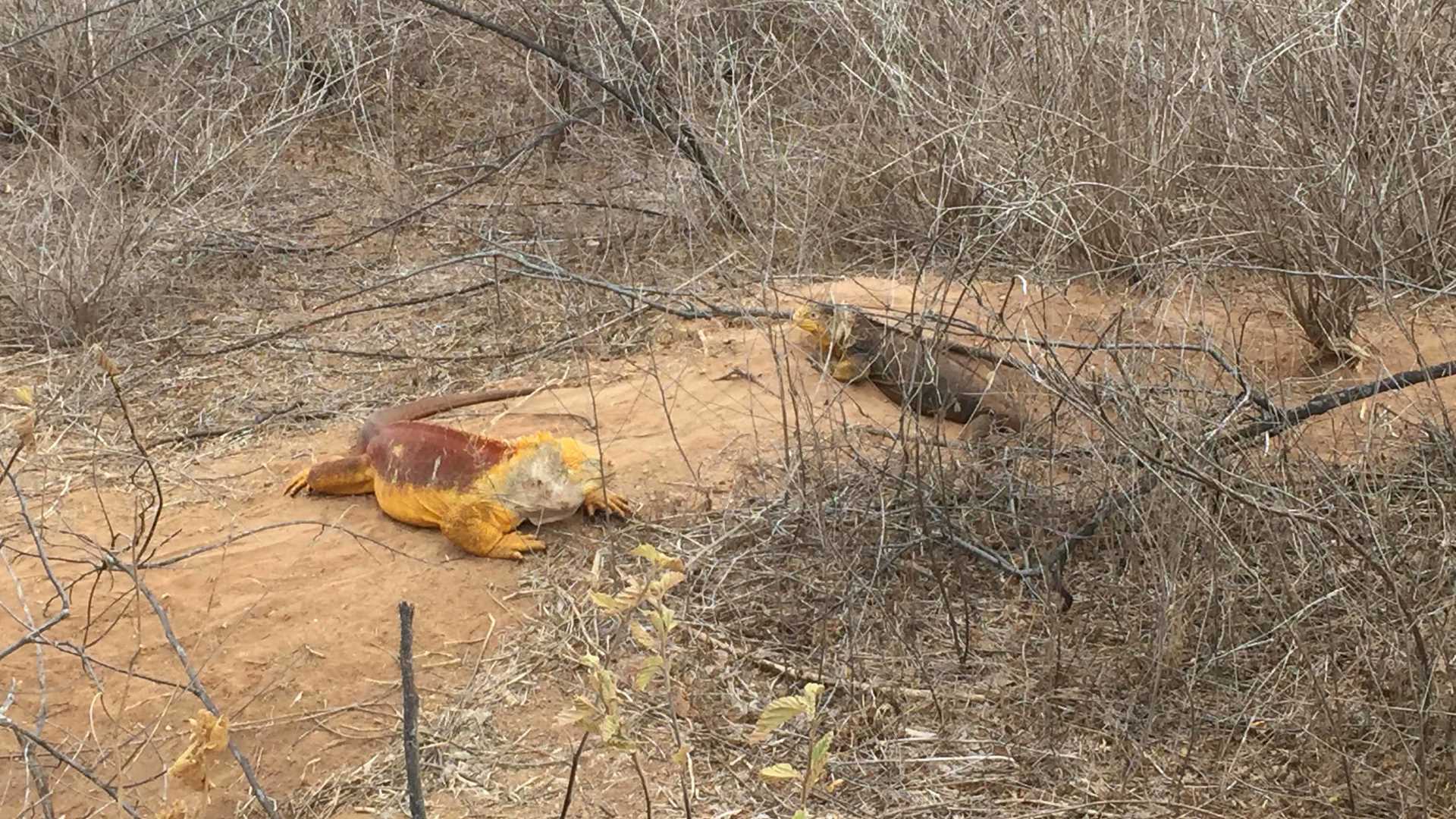Guests onboard National Geographic Endeavour II spent the day exploring Santa Cruz and surrounding satellite islands. We began the day with a long hike across the northwestern side of Santa Cruz in search of the endemic land iguana. Along the way, guests learned about various plant species unique to Galapagos and their special adaptations to this harshly dry and salty terrestrial environment. We delved into the way in which the leather leaf and cactus genera have evolved to decrease the surface area of their leaves, in order to reduce the rate of evapotranspiration during dry spells. Guests learned about the ways in which Galapagos plants defend themselves against large herbivores, including spines and gigantism.
Our first sighting of the land iguana was quite far away from the trail, but as we progressed, the land iguanas sat closer and closer to the trail. We got up close to a mating pair, the male exhibiting beautiful bright yellow coloration. Guests learned about the evolutionary history of the land and marine iguanas and the ways in which they have evolved to coexist with one another. Habitat partitioning is an important behavior that allows these species to avoid direct competition, which could lead to displacement of one of the two species.
Guests spent the latter portion of the morning snorkeling at Guy Fawkes, a unique rock structure serving as a marine oasis for many oceanic organisms. Juvenile Galapagos sea lions and the elusive filefish were just a few interesting species present.
Guests spent the afternoon exploring the islet called Eden, a massive tuff cone offering a plethora of seabird species, including great blue herons, Nazca and blue footed boobies, and swallow-tailed gulls. The bays surrounding northern Santa Cruz are lined with extensive mangrove forest cover, the perfect habitat for juvenile reef sharks. Guests had the chance to see these amazing creatures up close from the Zodiac. The highlight of this excursion was learning about the ecosystem of the mangrove forests.
Guests ended the day with a sunset cruise around Daphne Major, where they learned about some of the most important evolutionary research ever conducted.







